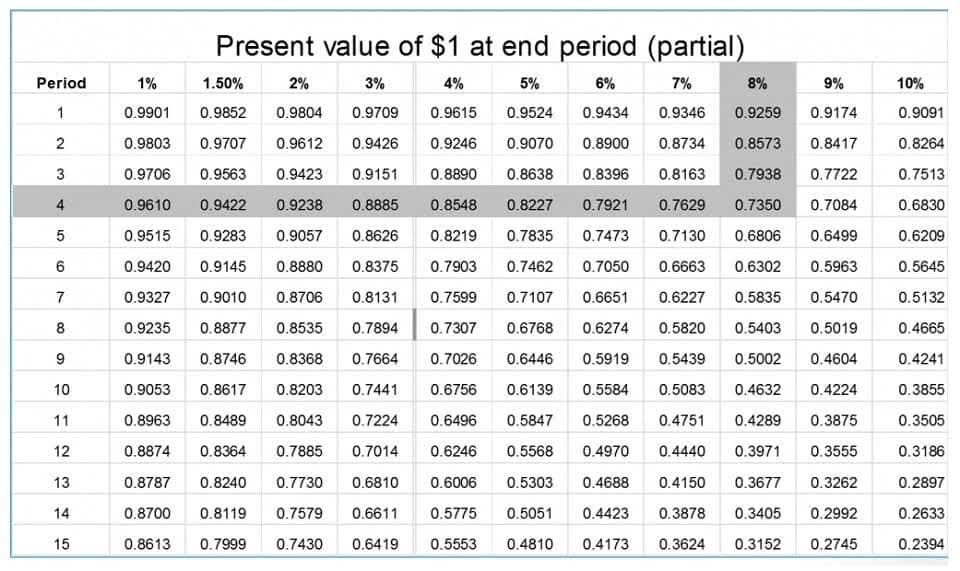
Working capital could be temporarily negative if the company had a large cash outlay as a result of a large purchase of products and services from its vendors. As a business owner, it’s important to calculate working capital and changes in working capital from one accounting period to another to clearly assess your company’s operational efficiency. Lenders will often look at changes positive change in net working capital in working capital when assessing a company’s management style and operational efficiency. If the change in working capital is negative, it means that the change in the current operating liabilities has increased more than the current operating assets.

Change in Net Working Capital Formula (NWC)
- However, the real reason any business needs working capital is to continue operating the business.
- But if the change in NWC is negative, the net effect from the two negative signs is that the amount is added to the cash flow amount.
- Meanwhile, the company experiences rapid growth in production, requiring increased inventory levels and faster payments to suppliers, causing a surge in A/P.
- Unlike working capital, it uses different accounts in its calculation and reports the relationship as a percentage rather than a dollar amount.
- The working capital of a company—the difference between operating assets and operating liabilities—is used to fund day-to-day operations and meet short-term obligations.
- This efficiency helps a business maximize its profitability, as it is well-prepared to handle unexpected expenses or invest in income-generating opportunities without relying heavily on external financing.
The Change in Net Working Capital (NWC) measures the net change in a company’s operating assets and operating liabilities across a specified period. As a business’s assets and liabilities change, you can expect there to be a change in net working capital as well. Every business will experience working capital changes over essentially any given period of time. Depending on your business activities during a particular period, you could see a significant change in working capital or not much change at all. The company’s cash flow will increase not because of Working Capital, but because the company earns profits on the sale of these products. Imagine that in addition to buying too much inventory, the retailer is lenient with payment terms to its own customers (perhaps to stand out from the competition).
- The components of net working capital include current assets such as cash, cash equivalents, and prepaid expenses as well as inventory and accounts receivable assets you can convert to cash within a year.
- This ratio is expressed as a percentage, which tells you how much short-term money exists in relation to the business’s total money.
- Changes in net working capital can have significant implications for a company’s financial health.
- My problem was that I was looking at the numbers too much without seeing the entire picture of cash flow.
- The essence of the concept is that if a company has a positive working capital, it means they have funds in surplus.
Working Capital Ratio Formula
Regular dividends can also signal to the market that the company is financially healthy. The interpretation of either working capital or net working capital is nearly identical, as a positive (and higher) value implies the company is financially stable, all else being equal. Change in net working capital refers to how a company’s net working capital fluctuates year-over-year. If your net working capital one year was $50,000 and the next year it was $75,000, you would have a positive net working capital change of $25,000.
Negotiate favorable payment terms with suppliers
- Gross working capital refers to the total current assets a company has on hand to conduct its business operations, such as cash, inventory, and accounts receivable.
- Being forced to wait long periods of time for payment can drastically affect working capital and is a leading cause of small business cash flow problems.
- On the other end of the spectrum, a rise in current liabilities (like accounts payable) results in a decrease.
- Paying off long-term obligations requires planning to avoid compromising the funds for running the business.
- Renegotiating to obtain longer payment terms or lower interest rates on loans can improve working capital by reducing your short-term liabilities.
• Net working capital (NWC) is the difference between a company’s current assets and current liabilities. As a business owner, it is important to know the difference between working capital and changes in working capital. Working capital tells you the level of assets your business has available to meet its short-term obligations at a given moment in time. Change in working capital, on the other hand, measures what is happening over a given period of time with regard to the liquidity of your company. Change in Working capital cash flow means an actual change in value year over year, i.e., the change in current assets minus the change in current liabilities. With the change in value, we will understand why the working capital has increased or decreased.
Net Working Capital (NWC) vs. Working Capital: What is the Difference?
Therefore, as of March 2024, Microsoft’s working capital metric was approximately $28.5 billion. If Microsoft were to liquidate all short-term assets and extinguish all short-term debts, it would have almost $30 billion remaining cash. The amount of working capital needed varies by industry, company size, and risk profile.
- Positive changes indicate improved liquidity, while negative changes may suggest financial strain.
- A positive change indicates an improvement in cash flow, suggesting efficient asset management.
- Let us understand the formula that shall act as a basis for us to understand the intricacies of the concept and its related factors.
- The net working capital (NWC) formula subtracts operating current assets by operating current liabilities.
- It doesn’t matter where they go as long as they affect Cash Flow from Operations correctly.
- Note, only the operating current assets and operating current liabilities are highlighted in the screenshot, which we’ll soon elaborate on.

This, in turn, can lead to major changes in working capital from one month to the next. As for accounts payables (A/P), delayed payments to suppliers and vendors likely caused the increase. Businesses that have good relationships with suppliers and lenders will typically be in a better position to renegotiate their payment terms. Renegotiating to obtain longer payment terms or lower interest rates on loans can improve working capital by reducing your short-term liabilities. If the company’s Inventory increases from $200 to $300, it needs to spend $100 of cash to buy that additional Inventory. Because Working Capital is a Net Asset on the Balance Sheet, and when an Asset increases, that reduces cash flow; when an Asset decreases, that increases cash flow.
How is change in working capital calculated?
Cash flow is the net amount of payroll cash and cash-equivalents being transferred in and out of a company. On SoFi’s marketplace, you can shop and compare financing options for your business in minutes. If the purchasing department opts to buy larger quantities at one time, it can lower unit prices. • To find the change in net working capital, subtract the net working capital of the previous year from the net working capital of the current year. Changes in working capital are often used by investors and lenders to assess the health and value of a business. Read on to learn what causes a change in working capital, how to to calculate changes in working capital, and what these changes can tell you about your business.

In the absence of further contextual details, negative net working capital (NWC) is not necessarily a concerning sign about the financial health of a company. The reason is that cash and debt are both non-operational and do not directly generate revenue. So, if the company somehow classifies these items within Working Capital, remove and re-classify them; they should never affect Cash Flow from Operations.
